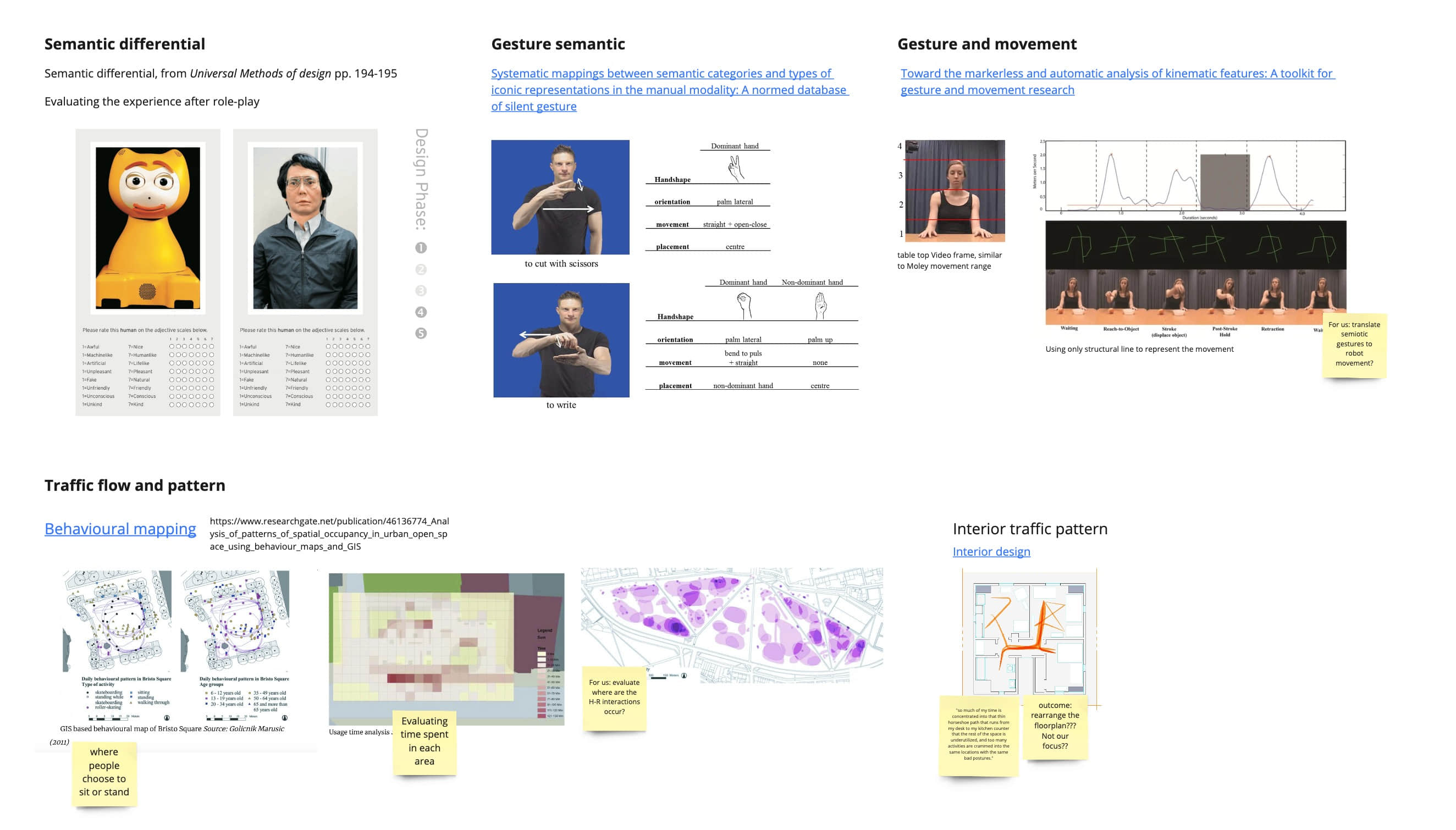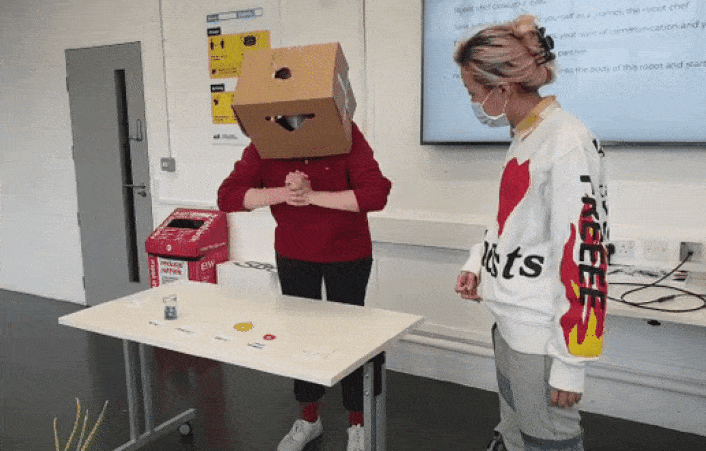String Puppet
Micro UX - Week 3

Brief: Design the social relations and interactions between a robot chef and its human guests.
Team: Tiana, Ana, Sanjana, Sylvester
Gesture Semantic
Learning from last week’s play-test, we found out that the previous settings display and consolidate the segregation of human and robot counterparts in the kitchen. Adding a robot makes a domestic kitchen less social. However, we also noticed gesture communication within collaborators and can potentially build up human-robot familiarity.
According to our previous experiment, audiences implement gestures and movements performed by robot impersonater, revealing that they might build analogical relationships by mapping specific features of their conceptual representations onto an iconic gestural structure (Ortega and Özyürek, 2019). Could there be a general micro gesture language for human-robot communication?

Working with constraints
We aimed to question the emotional and social connections between robots and humans through movements, gestures, and sound. To amplify the study of gesture communication, we decided to keep it silent. The ‘robot’ participants could either move away from the table or use verbal communication. They also could not operate some of the tools, which requires them to ask for help from the human partner. We encouraged the ‘robot’ to find ways to express greetings, thankings, apologies and even ‘enjoy your meal’, hoping to spot some iconic gesture structure.


The experiment evoked loads of interactions comparing to last week, which confirmed our assumption that it is possible to use gesture to communicate with a robot. However, the accuracy and efficiency dropped massively without talking and speaking. After a while, participants seemed to create a shared gesture structure or system, but all of them agreed that voice interaction is essential in the interview.
Feedback and reflection
During the feedback session, John and Al assent setting up a scenario (the human comes from work and wants a pizza), but pointed out it could be more fruitful to improve effective improvisation. A more scientific approach is essential for our experiment, meaning that we need to consider what to test, which variants to tackle carefully. For example, if we focus on human emotions, it would be unnecessary to ask how the ‘robot’ feels. In general, the design this week is more of a workshop than an experiment: it aims to provide inspiration and unexpected outcome. Next week, we plan to refine our props and scene settings to explore interaction patterns in the kitchen.
👉🏻 See Week 4: Rage Room